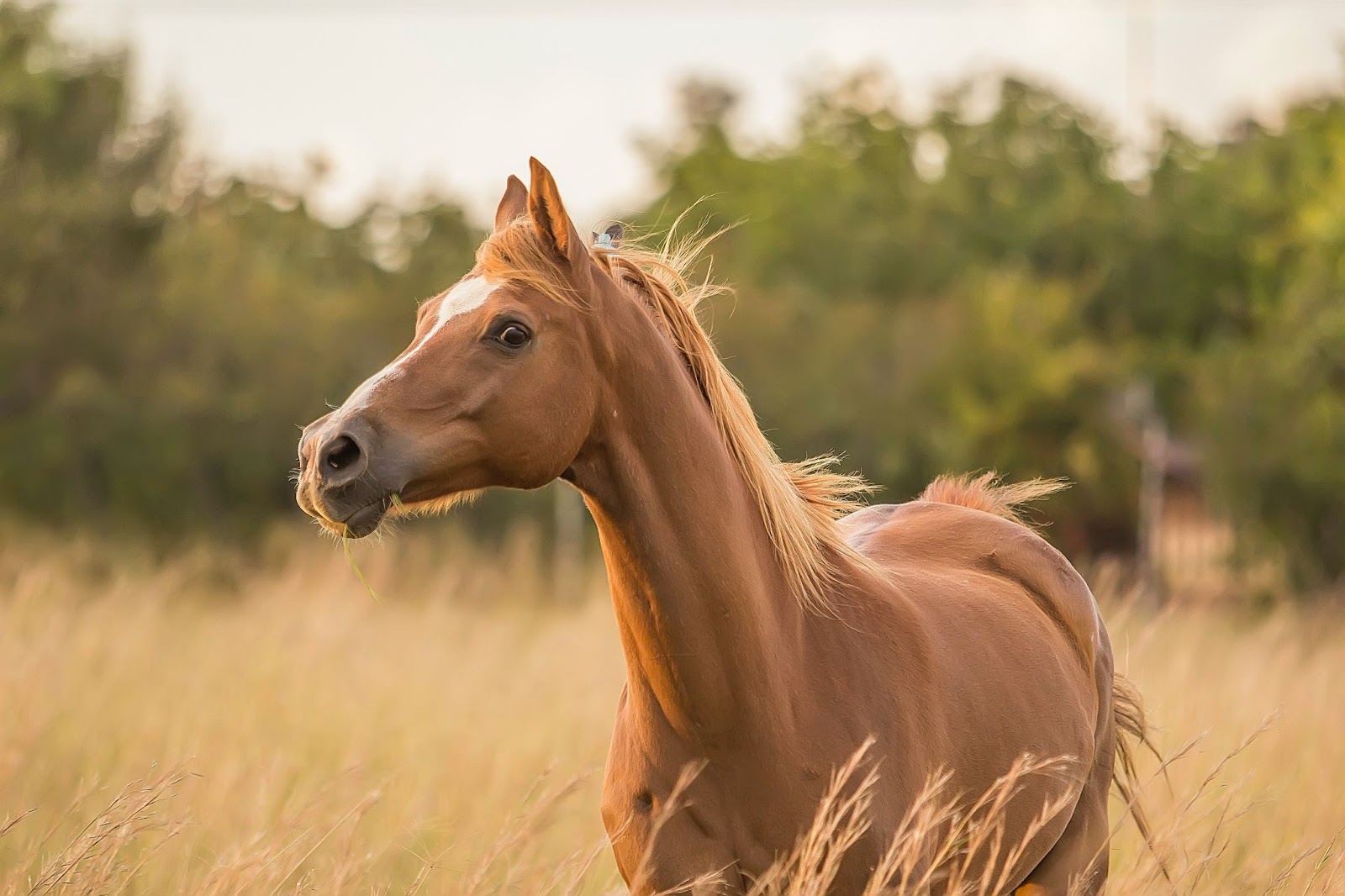My horse keeps bucking me off and avoids being caught in the pasture, what can I do to prevent this?
This is a common problem, but unfortunately, it isn’t one that can be addressed with a quick-fix solution - instead, requiring you to devote time to the issue and approach it with patience and perseverance. There are a variety of actions an owner or handler may be unknowingly doing that can contribute to this issue, so a variety of aspects must be considered when attempting to find a lasting solution.
There are many reasons a horse may have for avoiding being caught in the pasture or other places, and various ways that they learn to do it.
It won’t do any good to give you a clean-cut solution to this problem if we don’t also look at and consider the potential causes of this issue so that you can keep it from returning and learn to better manage it.

So, let’s take a look at some potential causes of this issue and see if any apply to your situation, and what sort of solution may be available...
1. Being too hard on the horse’s mouth with the bit is a very common cause for this type of issue. Riders who use excessive force on a horse’s mouth with a piece of steel (the bit) without there being any meaning or direction can cause a horse to dread being caught and ridden because of the expectation of discomfort to the tender inside of it’s mouth. The problem is that most people who ride this way are unaware that they’re pulling too much because they were taught to ride that way, or because they are riding the way everyone else they know is riding.
Solution: The solution here is to have a qualified professional take a look at the way you ride, and seek guidance if they can recognise a problem. Remember that the bit is for communicating with a horse, that should encourage a forced reaction due to the pain. If you feel as though you have to pull with excessive force to encourage an action, its time to re-evaluate your riding or your horse’s past training.

2. Saddle pinching or unnecessarily exerted pressure is another area that can cause a horse to dread being ridden and caught. A lot of people don’t have an informed idea about saddle fit and often unknowingly ride with saddles that pinch at the withers or place excessive pressure on certain areas of the horse’s back.
Solution: A poor saddle fit can have a large
impact on your horses behaviour and wellbeing. Watch for dry spots on the horse’s back, which indicate excessive pressure in that location, and also white spots in the hair which can indicate that there’s been a pressure problem at that location for an extended period. You can apply pressure to your horse’s back with your hand over the areas where the saddle makes contact to see if your horse reacts in pain to the pressure to confirm that this is an issue that must be addressed. You should always aim to watch for sore spots (rubbed/irritated areas) and if found seek advice from a qualified saddle fitter immediately if you are unsure of how to fit a saddle correctly and safely.

3. Question whether you may be taking the horse away from a companion whom it would rather stay with. One of the strongest and most basic instincts a horse has is the desire to be with other members of its species. One of the things owners of horses should be asking themselves is how they can become more desirable to spend time with as opposed to another horse.
Solution: Make the time a horse spends with you as enjoyable as possible. This doesn't mean allowing a horse to be badly behaved for fear of making them unhappy when correcting form or behavior, as this is likely to add to the issue and form bad habits. Horses crave the social structure of a herd, where the rules are known and are enforced. Letting a horse behave badly may cause them to regard you as an inferior herd member whom it cannot feel safe and secure with, potentially damaging its desire to spend time with you. Outside of the saddle, you should spend a good amount of time brushing, scratching, and otherwise doing something comfortable and thoughtful that the horse enjoys, as long as it is done within the bounds of respectful interaction.
The second part of the solution for this is to start training your horse to be alone without feeling distressed or experiencing separation anxiety. This can sometimes mean tying the horse away from
companions until they are calm and only then returning it to the pasture. This can be a difficult challenge, and may sometimes require professional help, but certainly shouldn't be ignored.

4. Do you cause the horse to become overly tired or sore when riding? Questioning this not only addresses the saddle fit issue but also how you ride, which may be causing a sore back or other discomforts. Existing conditions may already cause the horse to dread being ridden, and therefore dread being caught - with this extra pain inflicted by the rider only making this worse. You should take care to recognise that riders who go a long period without riding a horse, who then take them out and go for a long and potentially tough ride can create muscle soreness due to the horse being simply out of shape or having not experienced the weight and movement that comes riding in a while.
Solution: We’ve already talked about checking your saddle fit and the way that you ride, but you should also consider the impact of existing health conditions and what you can do to make your horse feel more comfortable when dealing with these. The welfare and happiness of your horse should come before anything else.

5. Does your horse have a “conditioned reflex” to leave when you approach, or when you approach with a lead rope and halter? Might this be a source of trauma? We've touched on this throughout the above points, and the importance of knowing that any type of behavior can become a habit, or “conditioned reflex”. This means that a reaction like leaving when you approach with a rope and halter quickly becomes a reaction to a cue – the cue either being your arrival or the halter and lead rope in your hand. As with anything that is repeated over and over, it can begin to develop a reflexive behavior, no longer needing the original cause of the behavior to trigger it.
Solution: Taking the time to try to understand the reasons that a horse may have for wanting to avoid being ridden or caught is a must. This can often be due to a tough life that may have included some form of abuse or having had fears instilled in them due to an unhappy past living environment. It may take a combination of correct pen work, correct ground schooling, patience, and making spending time with you a pleasant, safe, and encouraging experience for the horse.

Horses can sometimes be complex creatures to figure out and can require a great deal of skill to alter their thought patterns effectively. Just because we own a horse doesn’t mean that training them is within our capabilities. You can truly have a problem that you are unqualified to correct. So, it's always best to seek qualified help before you get into something that could make things unsafe or concerning.
It is imperative that you remember not to get complacent, no matter how much or little progress you feel you are making. Take care to avoid making any sudden movements or noises around the horse and ensure that they are always aware of where you are, including in their field of vision on approach. It is key to keep this up even when you can recognise improvements, as you don't want to undo any progress you may have made.
We hope this helps!
Discover more useful guidance and advice
here.
Do you have a pressing question that you'd like some advice or guidance on from one of our panel of equestrian experts? Click below to submit your question and we'll do our best to answer it!
Submit a question here...
Ready to discover the latest ads?
Click here to discover the newest in horses, horseboxes, tack and more...



